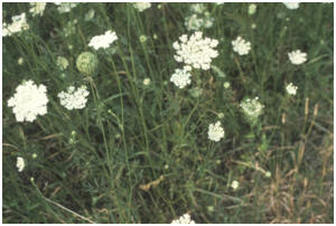Big Stone and Traverse SWCD's were awarded a grant for a Cooperative Weed Management Program (CWMA) in Big Stone and Traverse Counties. The objective of this program is to approach our counties' invasive weed problems through education, documentation, and treatments. The CWMA will work together with the existing invasive species management plans currently operating in counties which are the Big Stone and Traverse County Highway Departments and Big Stone County and Traverse County Ag Inspectors' Work Plans. The partners that made this grant possible include the MN Department of Transportation (MNDOT), Big Stone County and Traverse County Highway Departments, Big Stone County and Traverse County Weed Inspectors, Big Stone and Traverse SWCDs, U.S. Fish and Wildlife Service (USFWS), MN Department of Natural Resources (DNR), Natural Resources Conservation Service (NRCS), Farm Service Agency (FSA), Pheasants Forever, and private citizens. Our main goal in this program is to reduce the environmental and economic threats posed by invasive plant species to the grasslands.. Educating and raising awareness of the significance of these threats is crucial to achieving our goal. The Big Stone/Traverse CWMA has chosen to target two invasive weeds for eradication; Wild Parsnip and Queen Ann’s Lace. Both weeds are part of the carrot family, are biennials, and bloom from late July until fall.
The Big Stone/Traverse CWMA, administered through the Big Stone SWCD, has cost-share dollars available for landowners to spray and eliminate invasive weeds on their land. The District and CWMA may also be able to help arrange for your weeds to be sprayed by them. Please call the SWCD at 320-839-6149 ext. 3 for more information.
The Big Stone/Traverse CWMA, administered through the Big Stone SWCD, has cost-share dollars available for landowners to spray and eliminate invasive weeds on their land. The District and CWMA may also be able to help arrange for your weeds to be sprayed by them. Please call the SWCD at 320-839-6149 ext. 3 for more information.
Big Stone County Weed Occurance Map 2010Big Stone County Weed Focus Area 2010Big Stone County Weed Occurance/Treatments Areas 2012Big Stone County Weed Occurance/Treatments Areas 2014Wild ParsnipThis weed is a high priority to the CWMA due to its toxic sap that can cause severe blistering to the skin. Once the sap comes in contact with your skin it then needs sunlight to react (phytophotodermatitis). If you are planning to remove wild parsnip from a site or are working near it, wear long sleeves, long pants and gloves. This will be the most effective way to make sure your skin will not come in contact with the sap. Only the sap can cause the blistering. Unlike Poison Ivy, rubbing up against the leaves will not cause a reaction to the skin. The leaves are large with toothed edges. The flowers are yellow and umbel shaped. The seeds will remain viable for up to 4 years in the soil. It will grow 2-5 feet tall, which makes it easily distinguishable from a native plant to Minnesota, Golden Alexander.
Control Hand pulling or cutting the root with a spade just below the soil surface works well. Applying 2,4-D or metsulfuron-methyl to the rosettes in Spring or Fall works extremely well. |
Cost-Share Form/Application for AssistanceInvasive Weed Reporting FormInvasive Weed Treatment RecommendationsWeeds Won't Wait. Don't Hesitate!Queen Anne's LaceThis weed has some similar characteristics as parsnip. There are reports of skin irritations when the leaves come in contact with the skin. However, if the leaves are ingested it may become fatal. You may be wondering why someone would be eating the leaves, but the carrots we eat today were once cultivated from this plant. The tap root is edible, but is not encouraged. Hence, its other name, wild carrot. The leaves are compound and have a carrot-like odor. The flowers are small and white with 5 pedals in an umbel shape. It grows 2-4 feet tall.
Control Can be hand pulled, wearing gloves of course or mowed before the plant has flowered. Applying 2,4D or metsulfuron-methyl to the rosettes in Spring or Fall works extremely well. |




